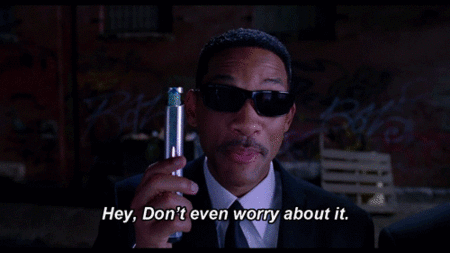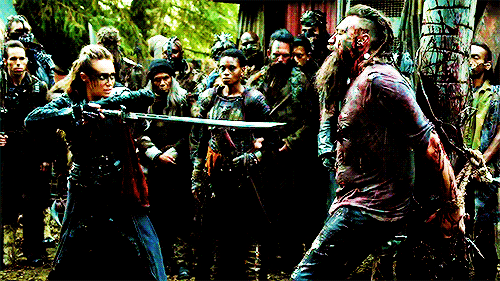A Celebration of Movement and Thought from etruffuat on Vimeo.
We who are poets know that the reason for a poem is not discovered until the poem itself exists. The reason for a living act is realized only in the act itself. This meeting is a spontaneous explosion of hopes. (Thomas Merton 155)
To tell the story of this project—how it began, and how it came to be what it is—would be to tell the story of my life in many ways. I won’t do that here. I will say: I’ve been trying to find a voice—my voice—through these undergraduate years and, though I feel I say this at the end of every year, I am closer now than ever before. What I wanted to do was create a video essay that would not only be insightful, but also fun to watch—something people would want to watch for no other reason than it’s beautiful. Something that moves the viewer in the same way film or poetry or music does. I like to watch the really academic (or at least informational) videos. I think they’re great. But I can’t do that. It’s not really in me. So I went for something that I hope will come across as poetic (or as close to it I could get anyway).
Poetic Criticism.
As in criticism delivered through poetry, as opposed to criticism about poetry. The term may not mean much, but it helps to name things, if only to have something to work from.
The Product
“A Celebration of Movement and Thought” is a video essay that explores movement across different media (film, animation, video games). It draws not only from the video essay, but also combo music videos (CMVs) and anime music videos (AMVs); the point of the video is not to be merely informational (be it learning combos in a fighting game or being able to watch an anime scene) but to see what the creator has done with that source material—to see how they have transformed it, whether wonderfully or not. I also have a strong attachment to words as words: not just for their ability to encode meaning, but also just for their presence and how they can be moved (animated) in video editing; this is something I did not fully realize until I started editing.
Perhaps the language of academia and common use can meet in the middle (by abstracting both) through poetry? This is something I want to explore further.
The Process
I made the video in Adobe Premiere Pro CS6. The end result is not quite complete though. The original plan was for it to be a standard video essay, with a narrated lecture-like component, so some of the clips are selected and arranged with that in mind. When I made the decision to have it be completely non-verbal (a good choice, considering the way I handled my Dark Souls video), I removed segments designed to provide space for narrating concepts and ideas, though not all that space was cut out. I had already been experimenting with this non-verbal approach earlier (as can be seen in this video I made exploring half of Sono Sion’s films).
The Point
Though I do not name it in the video I hope that this works as an implicit critique of remediation as outlined in Remediation: Understanding New Media by Jay David Bolter and Richard Grusin. By not narrating over the images beyond the initial quotations I hope to give equal weight to each example. Lau Kar-Leung (aka Liu Chia-Liang) and Bruce Lee are drawing movement with their bodies, in relation to a technology (the film camera), with the goal being maximum legibility on our part. Lee’s screen test is a display of speed, where in films he (and the stuntmen working with him) slow down and co-ordinate their movements so we can easily grasp them. In this way, they are thinking in frames (if only tangentially), much like animators. The sequences from Man With A Movie Camera (1929) and Breathless (1960) are there to show the similarity between still frames and animation cels, as well as demonstrate how a film looks when movement is disrupted: in both cases the frame is foregrounded, either by displaying it, or having us feel its absences.
In the second section I wanted to foreground the spaces—Thomas Lamarre’s intervals of thought (xxx-xxxi)—between shots, between planes and between movements (or gestures). The movement is not only drawn on screen, either by an animator or a body, but there is a conscious decision behind how it is drawn. What is the reasoning behind these decisions? What are they (the creators) trying to convey to us (the audience)? The time-image is used to convey Wall-E’s loneliness, and Jack’s uneasiness. But there are intervals between gestures in a Rogers-Astaire dance that reveal the friction between them (at least initially). It’s this friction that makes them seem so alive: Astaire’s flowing motions, smooth, mellifluous; Roger’s straight lines and bent elbows creating angles; the way he seems to float and glide, light-footed; her too too heavy feet, stomping, the weight of her steps seeming to contradict the lithe body on screen. These too are intervals of thought, carefully encoded for us to decipher.
Then finally in the last section I return to fighting games which opened the video. I hope that I have by this point collapsed the distinction between live-action and animation enough that the viewer will accept me drawing video games into that pile as well. Enfolded into this matrix of creator and audience then is the player, who is at once both a creator and an audience member. The game developers create character move-sets with interstices that allow for movement; but it is the player who makes them move. And not only that, they make the characters move in relation to how the opponent is making their character move. A player reads the opponent’s character based on knowledge of the developer’s design, but also the opponent’s tendencies and capabilities. They are reading and creating movement—they may even find new ways to move (glitches) that were never intended.
Though Lev Manovich is on the right track in saying that video games are about “looking and acting” (247), those words limit not only video games but all media as well. Video games are about the same thing film and music and literature and poetry is—seeing and moving. They just allow us to see in different ways, and so move us differently.
***
Works Cited
Manovich, Lev. The Language of New Media. Cambridge, Massachusetts: MIT press, 2001. 247.
Merton, Thomas. “Message to Poets.” Raids on the Unspeakable. New York: New Directions, 1964. 155-191.
Lamarre, Thomas. The Anime Machine: A Theory of Animation. Minneapolis: University of Minnesota Press, 2009. xxx-xxxi.









 I recently came across an incredible news article in which it stated that just days after an Artificial intelligence chat robot was introduced to Twitter as an experiment, it had to be taken down as the experiment had gone horribly wrong. “‘Tay’, an AI modeled to speak ‘like a teen girl’, in order to improve (Microsoft’s) customer service on their voice recognition software.” was an AI who was able to chat with twitter users and learn from these interactions. She soon, however, became a ‘Bush did 9/11’, hate spewing, Nazi loving, incest promoting robot.
I recently came across an incredible news article in which it stated that just days after an Artificial intelligence chat robot was introduced to Twitter as an experiment, it had to be taken down as the experiment had gone horribly wrong. “‘Tay’, an AI modeled to speak ‘like a teen girl’, in order to improve (Microsoft’s) customer service on their voice recognition software.” was an AI who was able to chat with twitter users and learn from these interactions. She soon, however, became a ‘Bush did 9/11’, hate spewing, Nazi loving, incest promoting robot.





You must be logged in to post a comment.